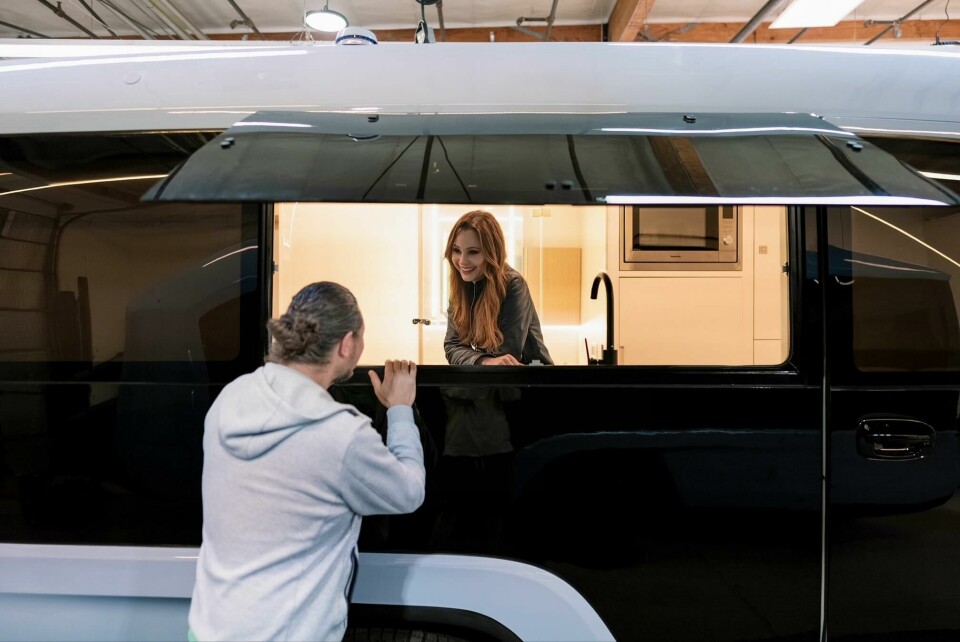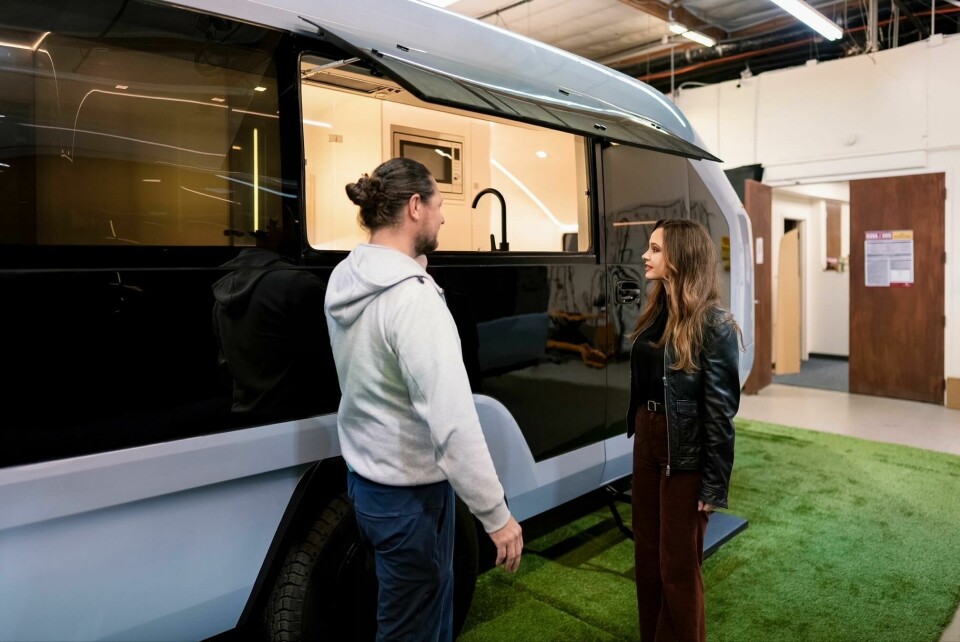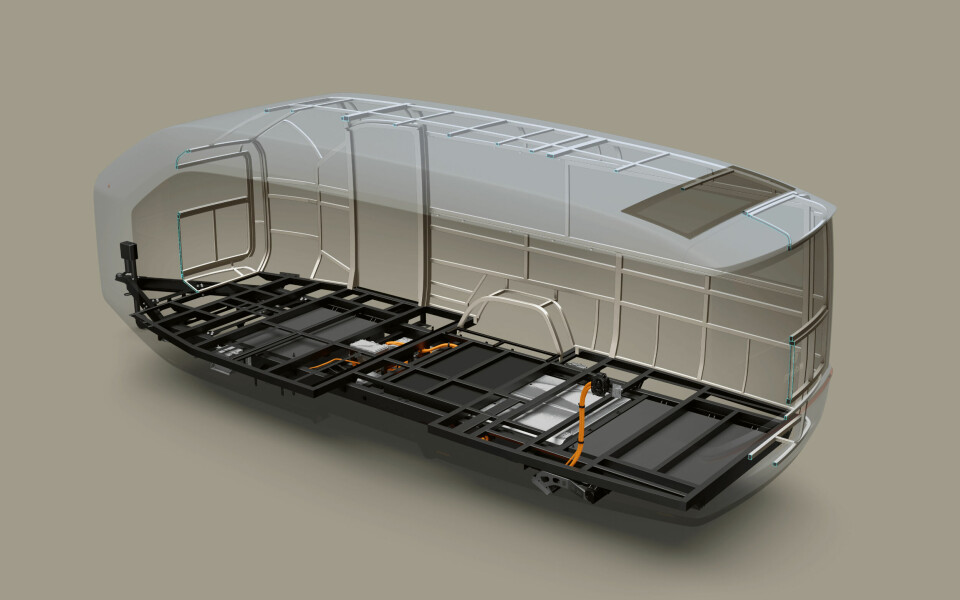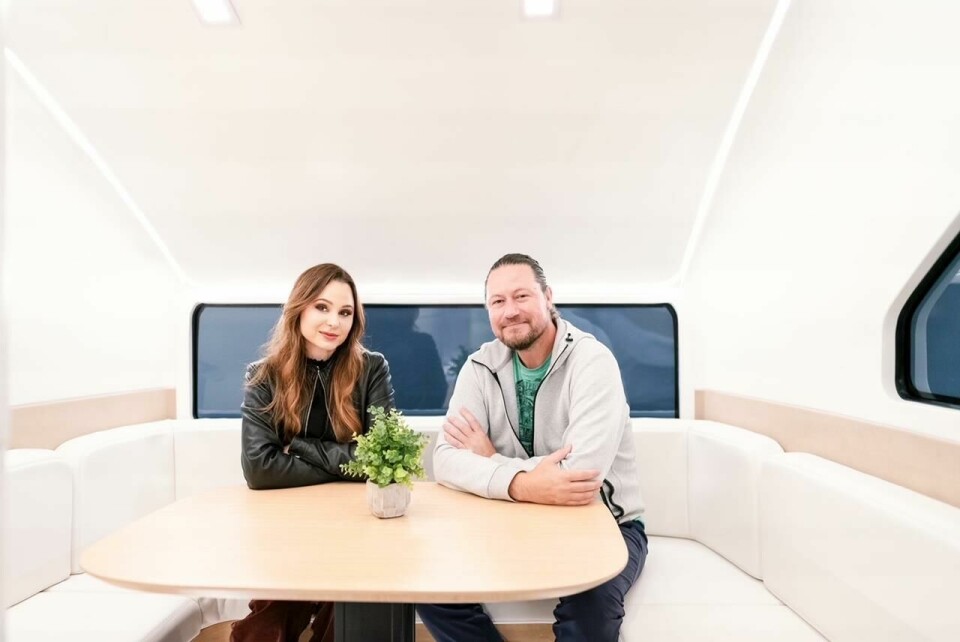
Pebble Flow electric RV features sleek design, simplified interface
A Silicon Valley startup led by a former Apple engineer has just revealed its first RV, with former Faraday Future and BMW designer Page Beermann leading the studio. CDN correspondent Laura Burstein got an exclusive first look
California-based startup Pebble Mobility is bringing a sleek, modern aesthetic to the RV world. Recreational vehicles have long been a bland desert of blocky forms, beige vinyl and tacky graphics. But a new generation of entrepreneurs and designers wants that to end.
“If you look at a lot of RVs, it’s just flat materials, they’re not painted, and they’re not necessarily aesthetic,” said Pebble head of design Page Beermann, who joined the company last May after more than eight years at Faraday Future (and who came from BMW/Designworks before that).
Pebble Mobility was founded by a former Apple engineer who rented an RV during the pandemic and realised the current offerings, well, sucked. Not only did the choices on the market have all the visual appeal of a meth lab, the technical operation left much to be desired.
At an exclusive visit to Pebble’s HQ in Silicon Valley, not far from the shadow of Google and the technology offices of companies like Mercedes-Benz, Beermann showed us the company’s Flow prototype ahead of its public showing next week at the LA Auto Show.
The Flow is all about simplicity, both in design and usability. Sleek, organic forms define the exterior, (the way running water shapes a pebble, Beermann explains, hence the company name), with a clean body side and copious amounts of tinted glass. The prototype we’re visiting in the studio is painted pale blue, but renderings show the Flow in shades of silver, orange and white.

Setting it apart from traditional RVs is its dual-motor electric powertrain, which allows the vehicle to maneuver on its own at slow speeds, and helps to increase efficiency while towing. A suite of cameras and sensors automates otherwise arduous and time-consuming tasks such as hitching and leveling. Power is provided by a 45 kWh battery pack, with more than 1 kWh available from roof-mounted solar panels, and the Flow supports bi-directional charging.
You can’t take the normal automotive approach when designing something like this
But Pebble sees the Flow as much more than a camping vehicle; executives envision it as an additional living space at time when real estate prices are prohibitive and housing is scarce, especially in the company’s home state of California.
“What attracted me to Pebble is that it’s a different kind of product that makes your life better,” Beermann says. “This is an ADU [accessory dwelling unit] for your home, it’s an emergency disaster command center, maybe it can help solve some housing problems in urban centers. You have all this volume that functions in different ways, and automotive doesn’t have that.”
Beermann says the interior design was inspired by architecture and furniture, and in particular the aviation industry, where maximising space and reducing weight are crucial. “You can’t take the normal automotive approach when designing something like this,” he says. “We are much more focused on mass reduction and space utilisation than any car company. You have to make use of every square inch.”

With the push of a button, the dining table at the front end of the vehicle lowers to the floor and the wraparound and bench seating folds out to a bed. In the rear, the primary bed stows into the wall to reveal a work station. The execution isn’t just efficient, but elegant, with light, airy colours and materials and modern fixtures. In the lavatory, clear glass doors darken electrochromatically and a black kitchen counter integrates a removable electric cooktop. A large kitchen window opening brings the outdoors closer (or allows the Flow to double as a taco truck).
A streamlined user interface is key to Pebble’s ethos. “Most of what you see, even with companies offering modern RVs, is an assembly of off-the-shelf-components,” Beermann explains.
“You have a water pump system that’s run by one control panel, and then a solar panel and electric system which is run by a different control interface, and they’re in different places in the RV.” A single touchscreen controls everything on Pebble’s vehicle. Even waste is reportedly easy to remove; instead of pumping out a nasty sewage tank, Beermann says the Flow has an on-board incinerator that condenses everything down into an easy-to-remove package — although we didn’t ask, nor wish for, a demonstration.
It’s about creating something that has a way bigger impact on peoples’ lives
Beermann says the prototype we saw is not the final production vehicle, which he and his team are currently refining. That is scheduled to be delivered in late 2024, with a starting price of US$109,000. “It’s going to look a little bit different but it will be essentially the same product having gone through an evolution.” Beermann didn’t reveal whether more vehicles are in Pebble’s future, but hinted: “The nice thing about these types of products is that they tend to be in a form factor that’s easily scalable.”

Meanwhile, Beermann’s defection from cars to a different kind of mobility company is not only one more example of how transportation design is changing, but how it can enrich the experiences of both designers and consumers. “This is about making memories,” Beermann says. “It’s housing, it’s a camping experience, it’s about creating something that has a way bigger impact on peoples’ lives.”


















